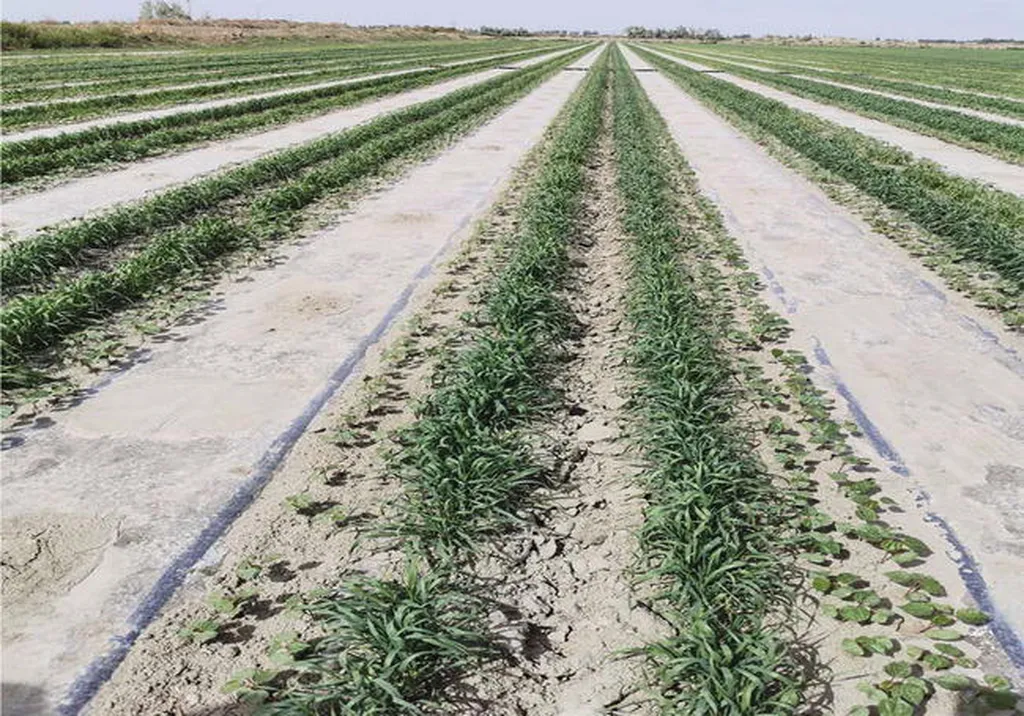In the heart of China’s arid Xinjiang region, a groundbreaking study led by Zhijie Li from Shihezi University and Xinjiang Agricultural University is reshaping how we think about cotton farming in salinized soils. The research, published in the journal ‘Agricultural Water Management’ (which translates to ‘农业水资源管理’ in Chinese), explores how deep vertical rotary tillage (DVRT) can optimize soil conditions and boost cotton yields, offering promising insights for the agricultural sector.
Soil salinization is a significant challenge in arid regions, hindering cotton production and sustainable agriculture. Li and his team set out to evaluate the effects of DVRT on soil moisture, temperature, salinity, root systems, photosynthetic characteristics, and ultimately, cotton yield. The study compared conventional tillage (CT) at a depth of 0.20 meters with DVRT at depths of 0.20, 0.40, and 0.60 meters over two years. The treatments included continuous CT, alternating DVRT with CT, and continuous DVRT.
The results were striking. DVRT increased soil moisture, reduced electrical conductivity, and regulated soil temperature. “This optimization of soil conditions promoted root development and photosynthetic efficiency, supporting biomass accumulation and yield formation,” Li explained. Among all treatments, DVRT at a depth of 0.60 meters (DT60) showed the best yield response, increasing yield by 47% and 44% in the two years of the study. It also improved the fiber quality index by 35% and 32%, and enhanced water use efficiency (WUE) by 45% and 50%.
However, the study also highlighted the risks of excessive tillage. While continuous DVRT (CDT) treatments enhanced salt leaching, they reduced soil moisture more significantly in bare ground than in mulched areas. This indicates that excessive tillage can increase evaporation, reduce water retention, and inhibit root development, thereby lowering WUE.
The research employed advanced modeling techniques, including partial least squares path modeling and random forest modeling, to understand the underlying mechanisms. The partial least squares path model revealed that DVRT optimized soil conditions, promoting root development and photosynthetic efficiency. The random forest model showed that soil moisture was the primary factor for yield formation, emphasizing its role in saline agriculture.
This study has significant implications for the agricultural sector, particularly in arid and semi-arid regions where soil salinization is a major challenge. By optimizing soil conditions, DVRT can enhance cotton growth and yield, contributing to more sustainable and productive agriculture. As Li noted, “These results highlight the importance of regulating soil moisture to improve crop yield, resource efficiency, and address climate change.”
The findings also offer a roadmap for future research and development in the field. As we face the challenges of climate change and increasing demand for agricultural products, innovative techniques like DVRT can play a crucial role in ensuring food security and sustainable resource management. This research not only advances our understanding of soil management but also paves the way for more resilient and productive agricultural systems in the face of environmental challenges.

